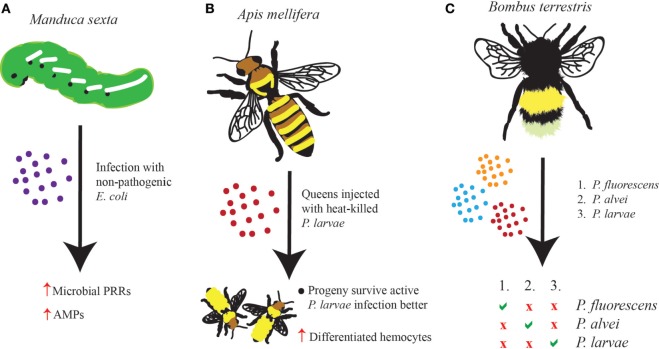Figure 1.
Evidence of immune priming in insects has emerged in many different forms and to varying extents. (A) Infection of Manduca sexta larvae with non-pathogenic Escherichia coli leads to the upregulation of microbial pattern-recognition receptors and antimicrobial peptides such that the insect survives better against a secondary infection with a pathogenic microbe, such as Photorhabdus luminescens. (B) Queen Apis mellifera honeybees injected with heat-killed Paenibacillus larvae give rise to progeny, which contain as much as three times as many differentiated hemocytes and which survive better against P. larvae infection than honeybees whose parents had not been injected. (C) The Bombus terrestris immune response exhibits a great deal of memory and specificity after being primed with one of three pathogens (Pseudomonas fluorescens, Paenibacillus alvei, or P. larvae). Survival against a homologous secondary infection is increased; however, no change in survival is seen against heterologous secondary infections.

